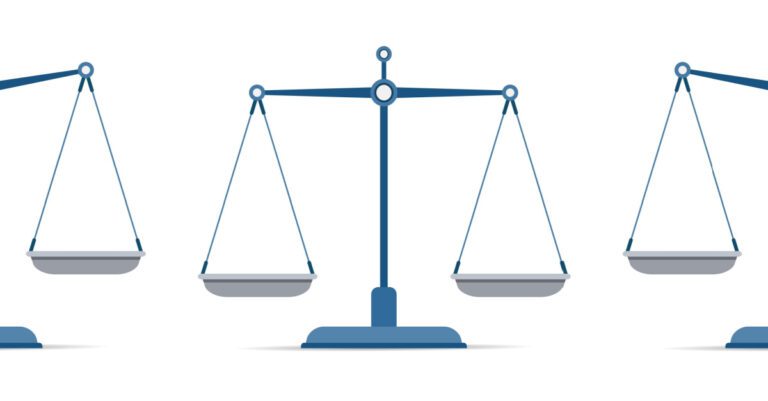In recent years, shipping professionals and those managing freight claims, probably feel like they have been busier than a one-armed coat hanger. The influx of volumes in the wake of the pandemic forced everyone working in the supply chain to step up their games. This is especially true of freight claims, as more issues tend to slip through the cracks in the rush to keep up. Loss or damage to shipments is more likely to happen when there is a high volume of freight moving through the system.
Due to the nature of freight claims, there is a misconception that you can only be reactive when it comes to dealing with them. You have to wait for a freight claim to happen to begin the process of getting a reimbursement. But, in truth, you can actually be proactive in mitigating and managing freight claims. With freight claims management software, shippers are now privy to mounds of data that can be turned into actionable analytics identifying trends and tracking areas where anomalies are occurring. By spotting areas that are susceptible, shippers can either correct them or, if that is not the case, circumvent them. To successfully navigate freight claims processes, shippers need to be both reactive and proactive.
“No matter how strong your proactive risk strategies are, you must also be ready to adapt as conditions change,” wrote Omer Abdullah in a SupplyChainBrain think piece. “Reactive actions need to be fast, to help mitigate the impacts of risk and crisis events — but they must also be made strategically.”
The sign of an effective freight claims operation is having the flexibility and pace to handle claims quickly while also having proactive logistics processes that curtail the chances of a freight claim. In this blog, we will present the processes for filing a freight claim, what shippers need to know about freight claims documentation and deadlines, and give an overview of how shippers can better manage freight claims during these volatile economic times.
What is Required to File a Freight Claim?
As not all shipments are the same, all freight claims are not the same. There can be many factors, rules, and nuances when dealing with freight claims. It can seem like a complicated process with many loose strings to tie up. So let’s take a step-by-step look at that process.
Identification
The first step is noting that the shipment has suffered some form of negative effect – for example, shipments that are lost, product that arrives damaged, or shipments that do not match up with BOL expectations, including short orders or wrong products. Documents should be checked to see what state the product was in when it left the shipper and photos should be taken to show the extent of the damage.
Assessment
After a potential claim has been identified, an assessment will determine what type of freight loss or damage was incurred. There are four main types of freight claims:
- Loss: This type is simply when a shipment was loaded at the point of origin but never arrived at its final destination. As clear-cut as this freight claim is, you must still have documentation that proves it began the shipping process and did not reach its destination.
- Shortage: This claim is not about arrival or what shape it arrived in, but how much of the product arrived. For instance, the paperwork has 120 widgets, but when the shipment arrives there are only 100. This particular claim is rising in numbers because of an upswing in human error as warehouses are often understaffed and are moving too quickly.
- Damage: Damage is when something happens in transit that results in a damaged product. This is most often the result of incorrectly loading cases on pallets, improperly loading pallets within the trailer, poor strapping and load restraint, or incidents like swerving or hard braking in transit that cause the load to shift. This is a common type of claim.
- Concealed damage or shortage: This claim is quite often not noticed during the initial arrival of the shipment to its destination. Also adding to the difficulty of this claim is that it can go days before it is noticed because the damage or loss can be concealed by packaging.
Calculating What is Owed
The carrier is required to put the customer in the same position they would have occupied if the loss or damage didn’t exist, so it is important to not only have the documentation of the actual value of the shipment. The amount owed will vary based on how much product was damaged – a total loss versus a partial loss when some product is salvageable.
Requesting Payment
Once all of the above steps have been verified and all of the documents are in order, it is time to enter a demand for payment. This is a process that is usually not answered immediately by the carrier. They will have to do their own investigation into the claim. It will take time and sometimes even some negotiations back and forth to determine how much is owed for the damaged shipment.
Freight Claims Documents: The Need-to-Know
Without documentation, there is very little chance a freight claim will be reimbursed. The best way to have a freight claim paid quickly is to not only have all the documentation in order and include all the information needed to substantiate your claim. Here is a list of the documents that are paramount to your claim:
- Freight claim form: This form describes what is being claimed and the specifics of why the claim is being made and what is being requested in the reimbursement.
- Original bill of lading: This is the detailed list of the shipment in the form of a receipt given by the carrier to the person consigning the goods.
- Paid freight bill: This is the document that says the freight was paid for. Even if a shipment is damaged, the shipment should still be signed for to show that there is proof of the delivery.
- Proof of value of freight lost/damaged: This should be an invoice that has the dollar value of the items per unit and the cost of the shipment’s damage after it is totaled up.
- Inspections: Keeping any evidence of inspections made once the shipment has arrived or anything that documents what the shipment looked like when it left the shipper are extremely helpful in pleading your case.
Included in these documents should be the following information:
- The shipment needs to be identified so the carrier can complete an investigation.
- The type of loss or damage must be stated.
- The amount for the claim must be estimated.
- A demand for payment by the carrier.
Freight Claims Deadlines
Doing all the advance work and having all the right documents will go for naught if you don’t make the deadlines. The Carmack Amendment, which limits the liabilities of carriers to loss or damage of the property itself, requires that all claims for loss or damage by a shipper be made in writing within nine months from the date of the loss or damage. This amendment, which preempts any state or regional laws, is the most important deadline that you need to keep track of. The carrier may be exempt from damage claims only under certain circumstances — an act of God, the government, burglars, or inherent vice, meaning that there is something inherently unstable about the product.
Freight Claims Today
The climate of freight claims has changed dramatically in the last few years. The COVID-19 pandemic, economic fluctuations, and technology all had impacts on supply chain operations. The current state of freight claims has certainly seen those effects. Many companies are trying to survive in strained economic times and are looking for innovative ways to keep costs down. One of those ways is freight claims management. In the past, companies might have not gone through the freight claims process because they were intimidated by the bigger companies due to their lack of claims knowledge or because they didn’t think it was worth the time to go after reimbursement. Unfortunately, these misconceptions can amount to significant revenue losses over time.
As information regarding the liability of a carrier, it is a matter of federal law controlled by federal statutes and decisions. The Carmack Amendment a.k.a. 49 U.S.C. §14706 makes the carrier liable for the actual loss, damage, or injury suffered by the claimant. There are several court cases on record that address the subject known as Measure of Damages, or, what was the claimants actual loss. Most of them try to establish the destination value, or market value, as a common sense means for determining loss.
And those claims have a greater chance of being successful now that many have banded together and boosted the confidence to pursue claims with more fervor while gaining greater knowledge about the claims system. Freight claims management software has also improved tremendously in the last few years, further helping shippers find ways to make the complicated tasks of freight claims easier.
Gain More Confidence With the Help of FreightClaims.com
With multiple market and economic factors making shippers more focused on profit margins, freight claims have become a more visible and viable way to protect profits. By learning what is necessary to file a freight claim — including collecting proper documentation and understanding deadlines — shippers can be more confident about the process. Another way to feel more assured about the subject is to team up with a top-notch freight claims management software provider like FreightClaims.com. The cloud-based software platform offered by FreightClaims.com is cutting-edge, user-friendly, and easily accessible. FreightClaims.com’s software can make document management a breeze and provide you with a convenient dashboard using analytics to evaluate your freight claims. Request a demo today.


